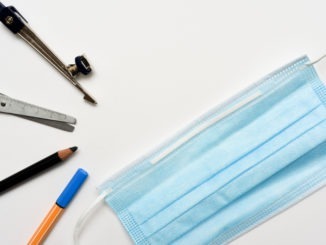
As reported by BBC news, schools are not “drivers” of COVID infection, Public Health England’s medical director has said
Dr Yvonne Doyle said she understood parents’ nervousness about schools returning after the summer in England, Wales and Northern Ireland but insisted they were not “hubs of infection”. Some have suggested a surge in cases in Scotland, where pupils returned in August, could be linked to schools. But Dr Doyle stressed lots of measures to cut COVID spread remained in place. Fewer measures are in place in schools than during last term, with bubbles and masks no longer in use in England and Wales, while Northern Ireland has also scrapped social distancing requirements.
Education secretary Gavin Williamson told BBC Breakfast it was right for children to have a “much more normal education experience”, with adults being able to go back to the pub, music festivals and theatres. He said there needed to be a “sensible balance” and that was why mass testing of secondary school pupils was taking place.
Dr Doyle said there were lots of regimes in place already to prevent the spread, including extra cleaning, advice on ventilation and testing. She said: “We understand, and I understand fully, that parents may be nervous but I would stress again that schools are not the drivers and not the hubs of infection.” She added that PHE attributed some of the school-related coronavirus figures to the testing regime.
But Prof Calum Semple, professor of child health and outbreak medicine at the University of Liverpool, said because most of the adult population was now vaccinated schools were likely to be a “greater part of the problem” when it came to the spread of coronavirus. He said while pupils were unlikely to get sick themselves they could transmit the disease to others, and that this should be considered when discussing vaccines for 12 to 15-year-olds.
A paper, published by the Royal Society, suggests the reopening of schools, and particularly secondary schools, is associated with an increased risk of transmission both among school-aged pupils and in the wider community. But it said the scale of that increase depended on control measures in the classroom and community as well as compliance with mass testing. Prof Semple said his biggest worry was closing schools again because education was very important but he said school building stock was poor, with ventilation an issue.
Among the measures being implemented for safety in schools in England are carbon dioxide monitors to help improve ventilation, with 300,000 being made available, but when asked on BBC Breakfast Williamson was unable to say how many were already in place. While CO2 monitors do not affect the transmission risk in schools, they can help to indicate how well ventilated a classroom is. Humans usually breathe out a higher concentration of carbon dioxide than is present in the atmosphere, so the monitors help to detect how much of the surrounding air has been breathed out, and how much is fresh air from outside.
Asked about vaccinations for 12 to 15-year-olds the education secretary said parents would find it “deeply reassuring to have a choice of whether their children should have a vaccination or not” and that he was “very keen” to hear the decision from the Joint Committee on Vaccination and Immunisation (JCVI). He said that government was “ready to go” if it did decide to extend the eligibility to children that age.
Prof Anthony Harnden, deputy chairman of the JCVI, said there were many arguments for and against vaccinating the age group but said whatever decision the committee reached would be in children’s best interests. Prof Semple, who sits on the Scientific Advisory Group for Emergencies (Sage), said it was a “really difficult judgement” with a fine balancing act between a “rare side effect”, in myocarditis, and the low risk from COVID to children themselves and the impact of transmission on wider society.



Be the first to comment